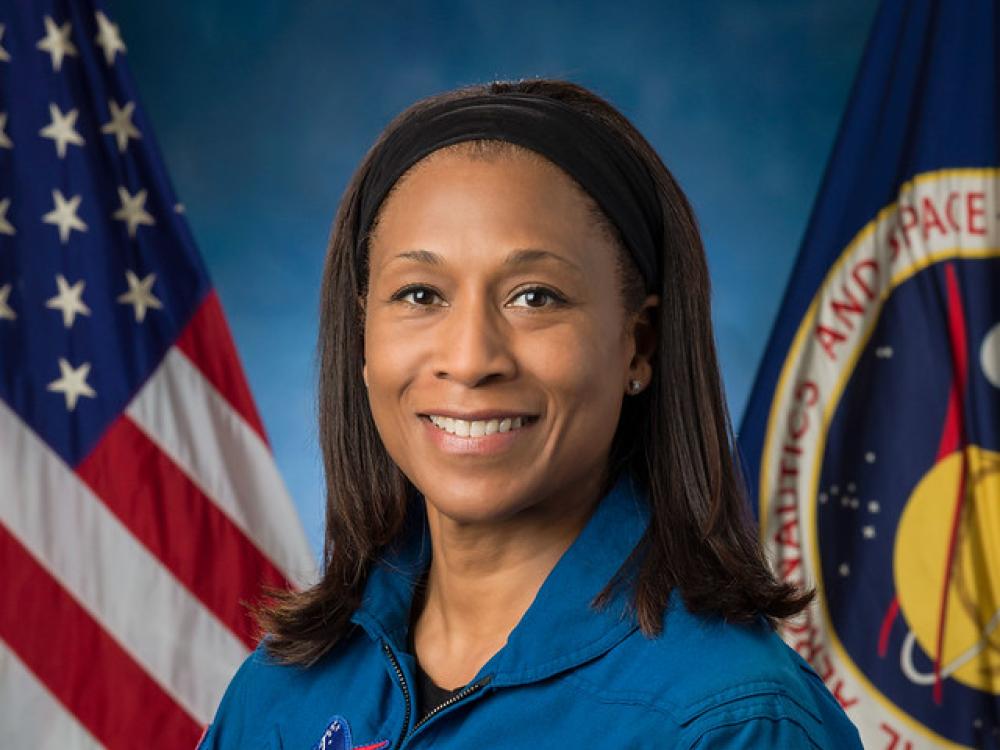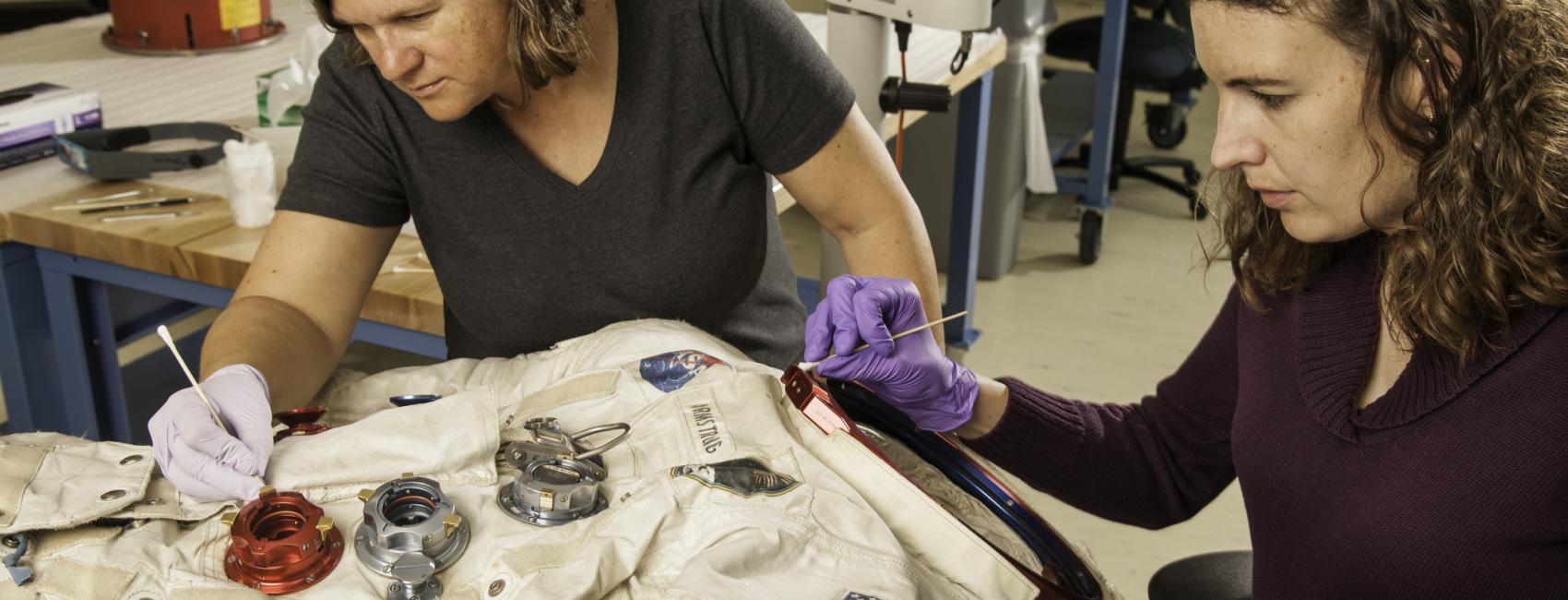
Feb 06, 2025
By Valerie Neal
In 2024, Jeanette Epps set the mark as the African American astronaut who has spent the most time in space.
Fifteen other Black astronauts in the U.S. astronaut corps have flown in space since Guion “Guy” Bluford became the first in 1983, but having logged 235 days on the International Space Station (ISS) as a member of the SpaceX Crew-8 mission, Epps has surpassed all of them. She is the fifth Black woman to fly after Mae Jemison, Stephanie Wilson, Joan Higginbotham, and Jessica Watkins, and these women join Michael Anderson, Guy Bluford, Charles Bolden, Robert Curbeam, Alvin Drew, Victor Glover, Fred Gregory, Bernard Harris, Ronald McNair, Leland Melvin, Bobby Satcher, and Winston Scott as flown astronauts who are African Americans. Glover and Watkins also served on the ISS, spending 167 and 170 days, respectively.
Jeanette Jo Epps was born in 1970 in Syracuse, New York. From childhood, she and her twin sister Janet were recognized as excellent students in science and math and were encouraged by family and teachers to become whatever they aspired to be. Both went on to study at nearby LeMoyne College, where Jeanette majored in physics. She later earned her master’s and doctoral degrees in aerospace engineering at the University of Maryland.
Epps worked in engineering research for 10 years before she applied to be an astronaut. Her graduate studies focused on uses of shape-memory alloys, or “smart metals.” She then went to Ford Motor Company’s scientific research laboratory as a research engineer investigating applications of those materials in the automotive industry and earning a patent for her work. From Ford, she was recruited into the Central Intelligence Agency (CIA), where she spent seven years as a technical analyst to “reverse engineer” technology assets of America’s adversaries.
Epps had long considered being an astronaut but modestly doubted whether NASA would select her. However, her admiration of Sally Ride, Guy Bluford, and Mae Jemison, and the encouragement of her astronaut friend Leland Melvin, finally persuaded her to apply. At age 38, she decided it was “now or never.” To her amazement but no one’s surprise, she was selected from 3,500 applicants as one of nine members of astronaut candidate Group 20 in 2009.
After completing initial astronaut training and technical assignments in Houston, Texas, Epps participated in two simulated space missions on Earth, one underwater and the other in caves. NASA uses the Aquarius habitat located 62 feet underwater near Key Largo, Florida, for one-to-two-week training sessions in mission operations. These NASA Extreme Environment Mission Operations (NEEMO) missions enable astronauts, working as aquanauts, to experience conditions similar to spaceflight. The underwater analog to a space mission has prepared astronauts for spaceflight since 2001. Epps was a crewmember on NEEMO-18 in 2014.
Epps also participated in the European Space Agency’s Cooperative Adventure for Valuing and Exercising human behavior and performance Skills (CAVES) program, a three-week training expedition deep underground that simulates planetary exploration and conditions of spaceflight. Exploring a cave system in Sardinia (a large Italian island in the Mediterranean Sea), astronauts practice technical skills, scientific research, and mapping as well as multicultural teamwork and communications in an isolated environment where safety is of utmost concern. Epps completed the CAVES program in 2019.
Epps was assigned to her first spaceflight on the crew of ISS Expedition 56/57 via a roundtrip flight on the Russian Soyuz spacecraft. She completed two years of training in Russia and elsewhere for the mission and was set to become the first African American space station resident. However, NASA changed the plan, and both Victor Glover and Jessica Watkins later became the first Black ISS crewmembers.
Epps received a new assignment for the first operational mission of Boeing’s new Starliner spacecraft to the ISS, anticipated to occur in 2021. She trained for that mission, but the flight tests and first mission were delayed by technical issues and have not yet been completed. Epps also began training on the SpaceX Crew Dragon spacecraft.
In mid-2023, NASA assigned Epps to the SpaceX Crew-8 mission for ISS Expedition 70/71, which launched on March 4, 2024, and ended on October 25, 2024. During almost eight months in orbit, she worked on scientific research and Space Station operations, and was responsible for the Japanese Experiment Module, operating experiments inside the lab and using the lab’s robotic arm to handle experiments outside. Like most astronauts, she also supported spacewalks and was herself the subject of experiments tracking how her body changed in space.
Epps waited almost 15 years for her first flight, but her patience was rewarded with a longer-than-usual stay on the ISS and unexpected status as the African American with the longest duration in space to date. Back in Houston, she is now one of the 47 active-duty astronauts who are eligible for Artemis missions to the Moon. That, too, may be a long wait, with the first mission scheduled for 2026 and only one mission a year for some time thereafter. But Jeanette Epps has demonstrated the right stuff—and endurance--for missions underwater, underground, in space, and possibly to the Moon.

We rely on the generous support of donors, sponsors, members, and other benefactors to share the history and impact of aviation and spaceflight, educate the public, and inspire future generations. With your help, we can continue to preserve and safeguard the world’s most comprehensive collection of artifacts representing the great achievements of flight and space exploration.
We rely on the generous support of donors, sponsors, members, and other benefactors to share the history and impact of aviation and spaceflight, educate the public, and inspire future generations. With your help, we can continue to preserve and safeguard the world’s most comprehensive collection of artifacts representing the great achievements of flight and space exploration.